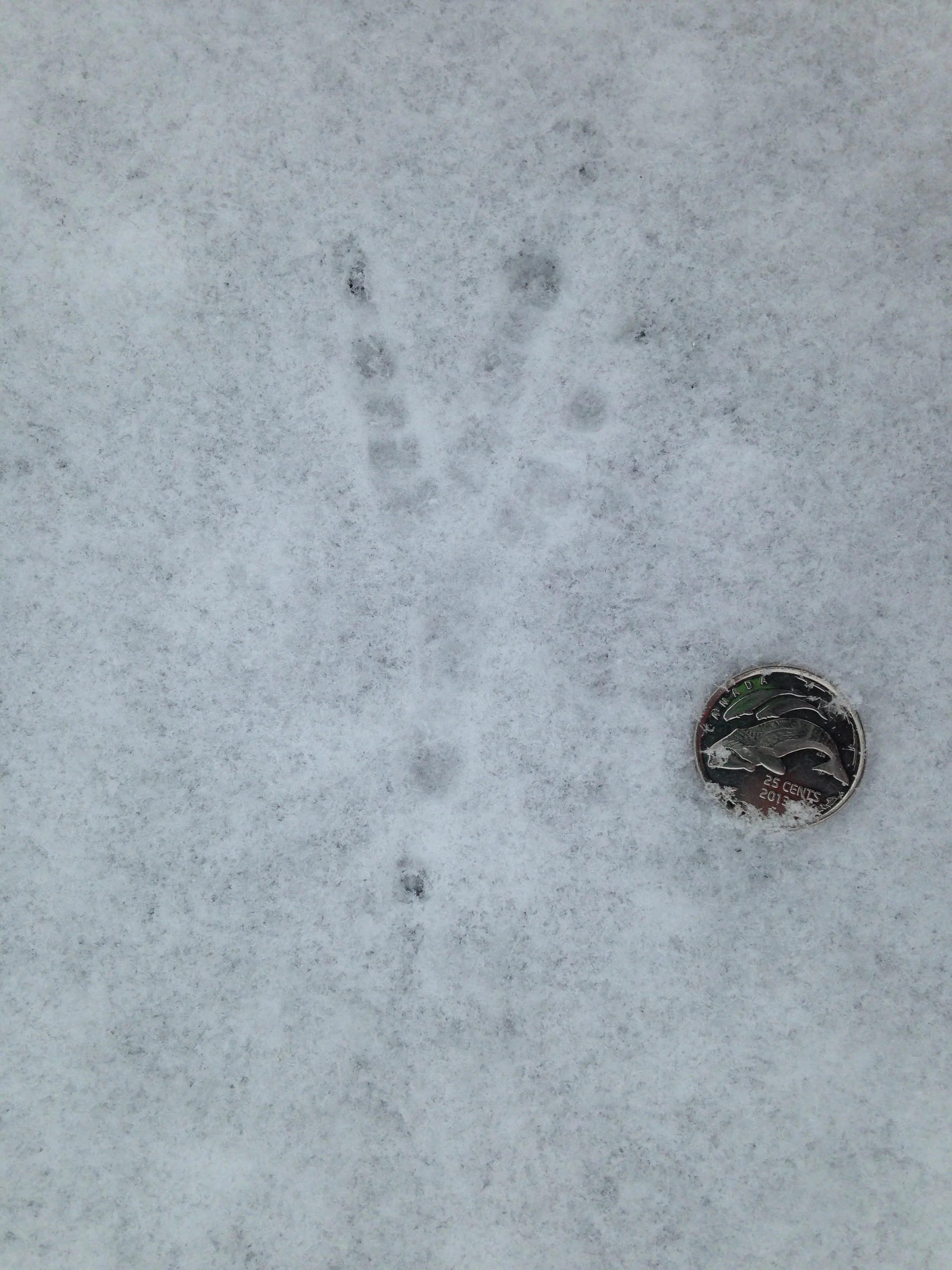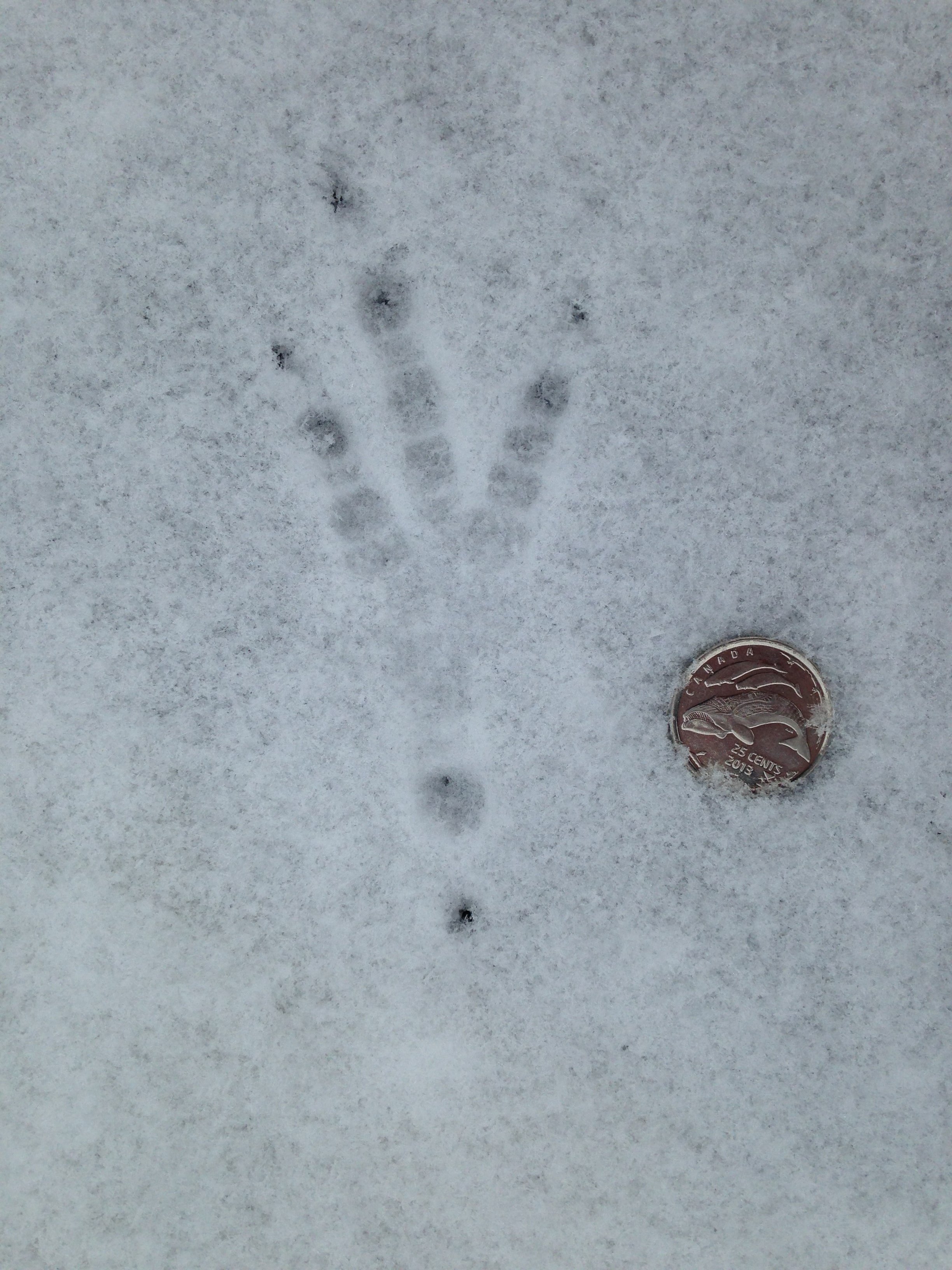Corvid Tracks at Bishop Mac
I ended up driving across town this morning to visit a spot where I’ve found Osprey nests, plenty of White-tailed Deer (Odocoileus virginanus) trails as well as tons of Coyote (Canis latrans) scat and trails in hopes of trailing some animals. While I did backtrack, and later fore track a deer for a good portion of my morning, the most interesting find were the corvid tracks I found in the parking lot as soon as I stepped out of the car.
Two corvid trails, ~7 cm track length (trail ß) on the left and 12 cm track length on the right (trail ¢).
There were three trails I immediately noticed, two smaller ones on the left and a larger one on the right. It took me a couple of tries to measure track lengths from each trail as every time I took off my mitts my hands immediately started to feel like they were burning in the cold wind. But the measurements I did get were 9 cm track length on the trail farthest to the left of the image (trail @, not pictured), and then ~7 cm (trail ß) and 12 cm (trail ¢), both of these are shown in the photograph above.
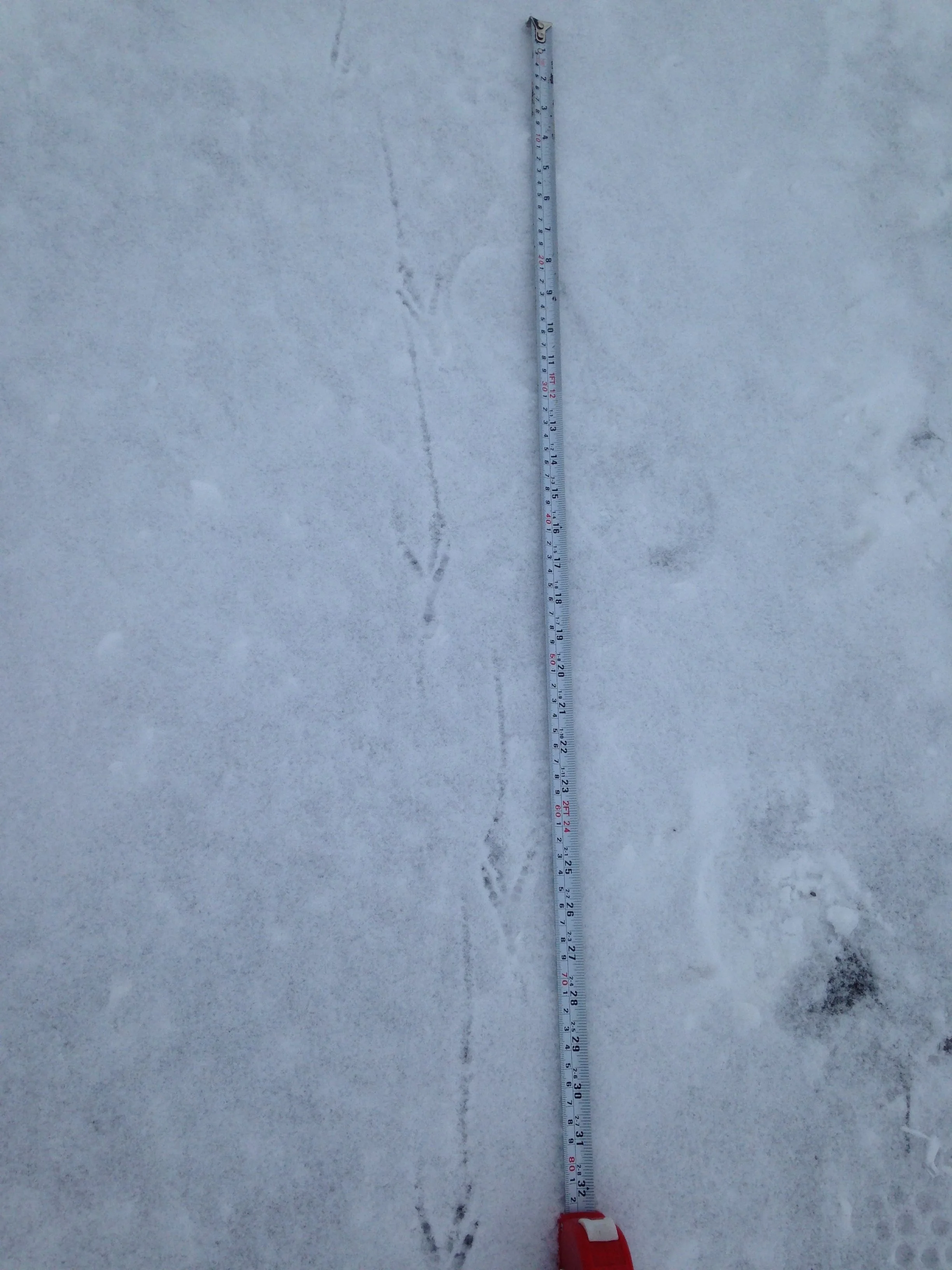
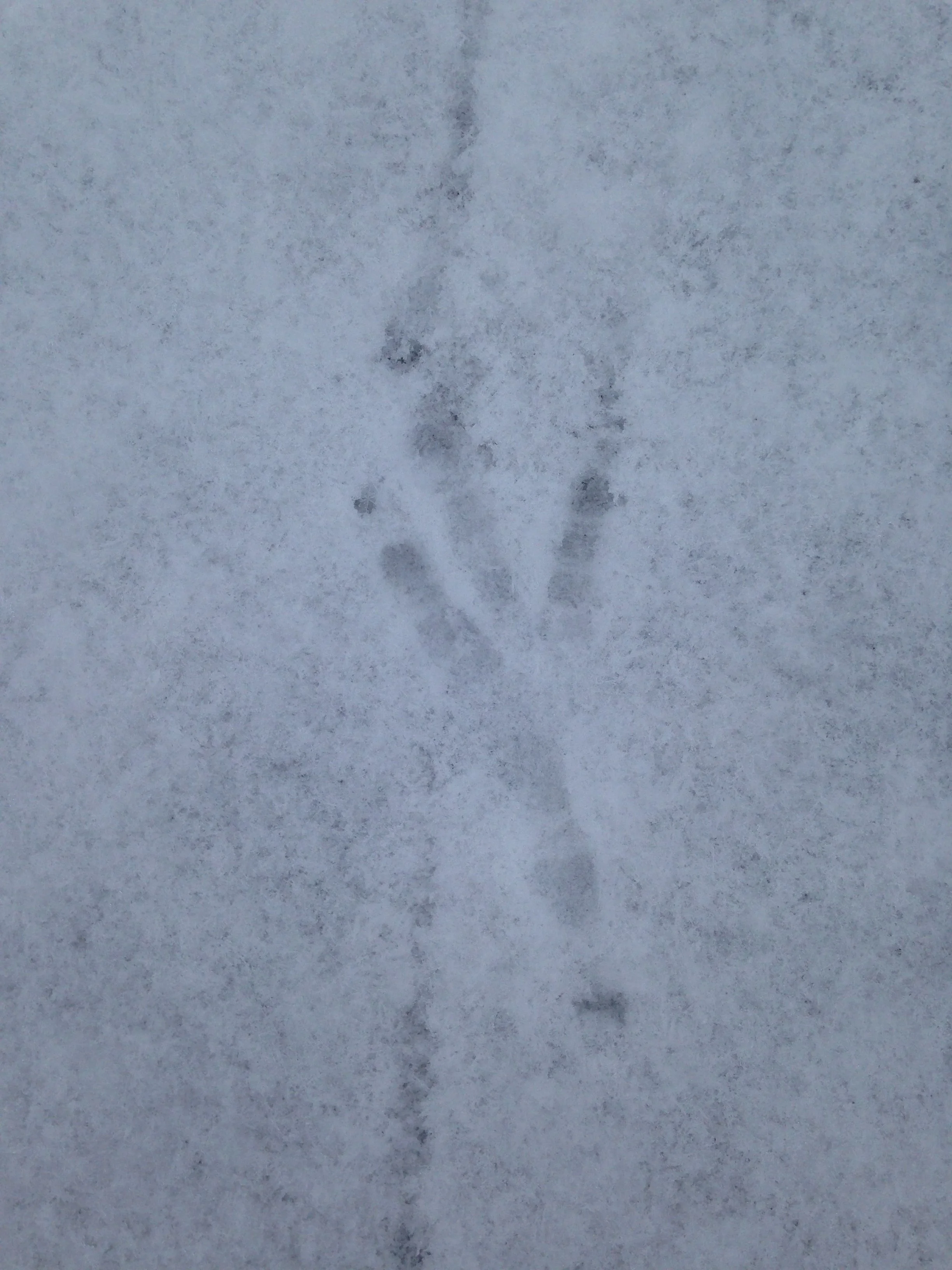
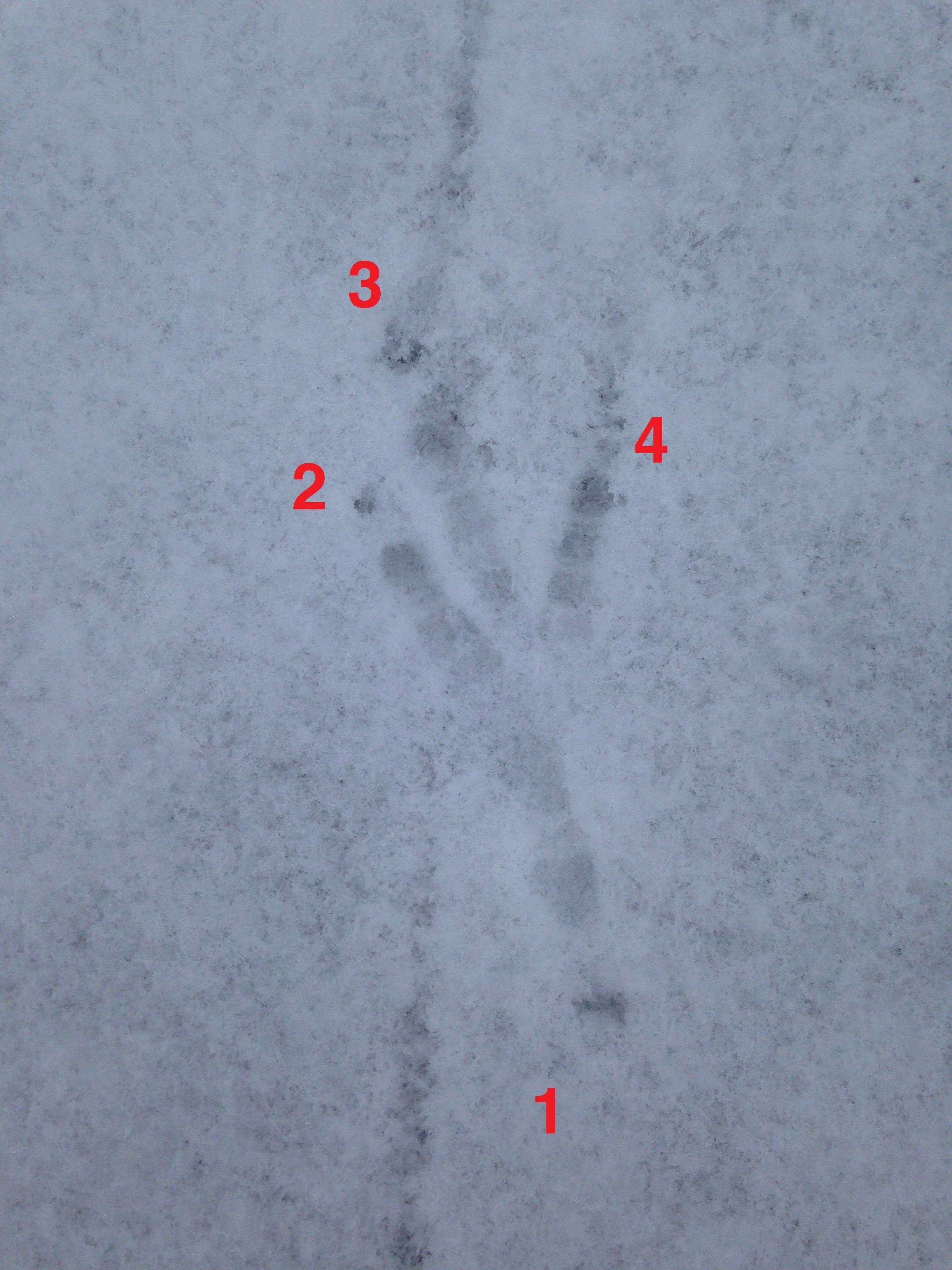
These tracks can be understood quickly as being made by a corvid because of the sizes mentioned, and also because of the track morphology. Remember toes are counted in sequence from the inside towards the outside, 1 to 4 in the context of birds, beginning with toe 1, the hallux, which in corvids points backwards. Toes 2, 3, and 4 point forwards. Corvid tracks, and I believe this applies to all species of corvids from all over the world, have a tendency to show toes 2 and 3 closer together than toes 3 and 4 are. This is true among all corvids in my area, which are Blue Jays (Cyanocitta cristata), American Crows (Corvus brachyrhynchos), and Common Ravens (Corvus corax).
According to Mark Elbroch and Eleanor Mark’s Bird Tracks and Sign (Stackpole Books, 2001) Blue Jay tracks are between 4.4 - 5.7 cm L, which is definitely too small and their tracks are also narrower and the toes are much less splayed than other corvids. Blue Jays also tend to walk less and more so hop.
American Crow tracks are between 7.5 - 9.2 cm L, which is in range for trail @, but just over my measurements for trail ß (7 cm), but that could be due regional variation or my measurements not being the best. Trail ß had a stride length of about 22 cm L, which is a bit longer than Mark and Eleanor’s numbers (walking stride of 11.4 - 20.3 cm) but I think again this could be regional variation.
Trail ¢ tracks were 12 cm, and a stride length of ~20 cm and both of these measurements fit in the ranges of Common Raven which Mark and Eleanor offer in Bird Tracks and Sign.
Left track of a Common Raven
Right track of a Common Raven
Now that we have the numbers and identification out of the way, what were these crows and ravens doing in the parking lot? It was so curious to me. I looked back towards the rest of parking lot I had just driven through and it was pretty much a thick layer of ice with a thin sheet of snow overtop. There were occasional tire tracks, a couple human (Homo sapiens) and domestic Dog (Canis familiaris) trails but otherwise the parking lot was seemingly empty of anything of interest to the corvids. I turned around and noted that someone had come and thrown some Chicken (Gallus gallus domesticus) eggs at a tree and concrete base of a lamppost. It took a second to connect, but then I realized that the eggs must have been the draw.
American Crows are known to predate on nestlings and eggs in the wild, and it would make sense for them to consume a discarded Chicken egg they had come across. Ravens too would consume a Chicken egg. Ravens will consume nearly anything. While looking around at the broken eggs I noticed a woman walking their dog through the parking lot, coming in my direction. Since no one else was there, I kind felt both pretty awkward staring at this mess of Chicken eggs, and also realizing that this lone woman may feel edgy about a dude just “standing around” in an empty parking lot, I quickly threw down my tape measure and took some quick photos of the bill marks in the yolks frozen in the grass and pavement.
Frozen yolk on in the parking lot. Tape measure is 7 cm across.
According to the Egg Farmers of Canada website, two large eggs (105 grams) have about 160 calories, with 11 grams of fat, and 13 grams of protein. All of the fat and half of the protein in a Chicken egg are found in the yolk which accounts for 1/3 of the eggs overall weight. This could be quite a find for crow or raven on a frigid day like today. I would expect that if I returned to the parking lot tomorrow, more of the egg would likely be pecked away at. I do wonder though, how difficult it is for a crow or raven to consume the frozen yolk as it is hard to grasp at with their bills. Would they scrape at the yolk with their toes and then eat off of their toes? Can they reach their bills with their toes? It seems like they could. Is this a tatic commonly employed by corvids? I have watched a Jay hold a caterpillar in their talons and pull it apart with their bill similar to how a larger bird of prey might, but a frozen smear on the pavement in a parking lot is a different story. I may have to crack an egg in my driveway and see what I can find out.
To learn more :
Bird Tracks and Sign by Mark Elbroch and Eleanor Mark, Stackpole Books, 2001
Egg Farmers of Canada - All about the Egg


